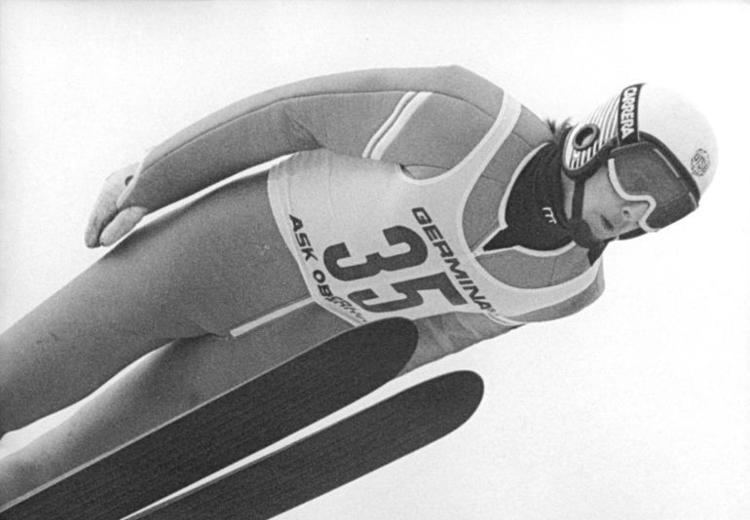Founder Torbjørn Yggeseth | ||
 | ||
Genre ski jumping (1808)
ski flying (1936) Location(s) Europe
Japan
Russia (rare)
Canada (rare)
Kazakhstan (rare)
South Korea (rare)
United States (rare) Inaugurated 27 December 1979 (27 December 1979) (men)
12 January 1992 (12 January 1992) (men's team)
3 December 2011 (3 December 2011) (ladies)
23 November 2012 (23 November 2012) (mixed) Organised by International Ski Federation People Walter Hofer (men)
Chika Yoshida (ladies) | ||
The FIS Ski Jumping World Cup is the world's highest level of ski jumping and the FIS Ski Flying World Cup as the subdivisional part of the competition. It was founded by Torbjørn Yggeseth for the 1979/80 season and organized by the International Ski Federation. Ladies began competing during the 2011/12 season.
Contents
- Global map of all world cup hosts
- Scoring system
- Mens standings
- Tournaments
- Ladies statistics
- Various
- World Cup winners by nations
- Timeline calendar
- Key people
- References
The rounds are hosted primarily in Europe, with regular stops in Japan and rarely in North America. These have been hosted in 20 different countries around the world for both men and ladies: Austria, Bosnia, Canada, Czech Republic, Finland, France, Germany, Italy, Japan, Kazakhstan, Norway, Poland, Russia, Romania, Slovakia, Slovenia, South Korea, Sweden, Switzerland and the United States.
Summer Grand Prix is the top level summer competition on plastic. The lower competitive circuits include the Continental Cup, the FIS Cup, the FIS Race and the Alpen Cup.
Global map of all world cup hosts
All 64 locations around the globe which have been hosting world cup events for men (57) and ladies (20) at least one time in the history of this competition. Pyeongchang is the next new upcoming host in 2017.
Four Hills Tournament (1979– ) Nordic Tour (1997–2010); Raw Air (2017– ) Swiss Tour (1980–1992) Bohemia Tour (1981–1994) Nordic Tour (1997–2010) FIS Team Tour (Oberstdorf included, 2009–2013)
Scoring system
Each season consists of 25–30 competitions, usually two competitions on the same hill during a weekend. One competition consists of a qualifying round, first round and second round. The top 10 jumpers in FIS ranking qualify directly to the first round, while the rest of the jumpers fight for the remaining 40 spots. The top 30 men in the first round advance to the second round, which is held in reverse order, so the best jumper in the first round jumps last. The aggregate score in the first and second rounds determine the competition results. The top 30 are awarded World Cup points. The winner gets 100 points while number 30 receives 1 point. At team events only top 8 receive points.
Men's standings
The table below shows the three highest ranked jumpers each year.
Tournaments
Next to the most prestigious Four Hills Tournament there are other tournaments as part of world cup:
Ladies' statistics
As of 16 February 2017
Various
As of 16 February 2017
World Cup winners by nations
The table below lists those nations which have won at least one World Cup race (current as of 16 February 2017).
Timeline calendar
Last updated: 16 February 2017
Key people
Torbjørn Yggeseth was a founder and a leader of this competition for the first 13 seasons. A new function called Race Director was introduced by International Ski Federation in 1992/93 with its first president Walter Hofer. Before that season this function didn't exist. In the premiere Ladies 2011/12 World Cup season Chika Yoshida was entitled as World Cup Coordinator, but since the season 2012/13 Yoshida is called Race Director.
